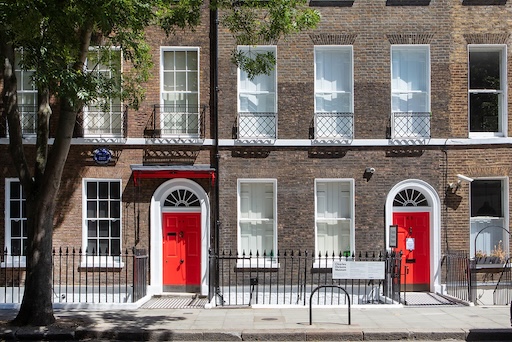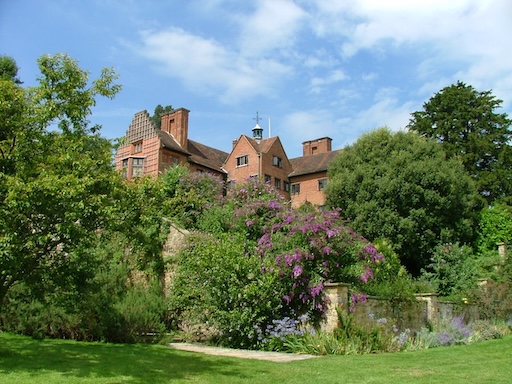
Nestled on a quiet street in Bloomsbury, London, far from the tourist crowds of the Thames and Westminster, there’s a modest Georgian townhouse with black railings, white-framed windows, and red brick walls. It doesn’t shout for attention—but it doesn’t need to. This is the Charles Dickens Museum, the former home of one of England’s greatest storytellers, where fiction met reality and a literary universe was born.
If you’ve ever read Oliver Twist or A Christmas Carol, you’ve already been inside Dickens’s imagination. But here, at 48 Doughty Street, you get to walk through the very rooms where those tales first came to life. From the desk where he wrote to the bed where he slept, the museum preserves a rich, often surprising, glimpse into the daily life of a Victorian literary celebrity.
A House Full of Stories
Charles Dickens lived in this house from 1837 to 1839, during one of the most intense creative bursts of his career. He was in his mid-20s, recently married, and already wildly popular thanks to the serialized success of The Pickwick Papers. It was here that he wrote Oliver Twist, Nicholas Nickleby, and finished The Pickwick Papers—not bad for a couple years in a new home.
Walking into the museum feels like entering a time capsule. The front parlour is bathed in natural light, with original furnishings and a portrait of young Dickens staring out above the fireplace. His writing desk sits in a quiet corner of the house, ink stains still visible—a silent witness to literary history being made.

Each room is carefully curated with personal artifacts: handwritten letters, first edition books, family portraits, and curiosities from his travels. There’s even a lock of his hair on display (yes, that was a thing back then). But the most moving exhibit is his quill—worn, stained, and responsible for changing the world one page at a time.
A Glimpse Into Victorian London
Beyond being a shrine to Dickens himself, the museum also gives visitors a vivid window into Victorian life. The kitchen downstairs, with its copper pots and coal-burning stove, smells faintly of soot and history. The nursery upstairs, with antique toys and a cradle, reminds us that Dickens wasn’t just a writer—he was a father of ten.
London in Dickens’s time was a city of contrasts: glittering ballrooms and grim workhouses, polished gentlemen and desperate orphans. And Dickens captured it all. The museum does an excellent job of bringing those contrasts to life with immersive storytelling and exhibits that highlight the social injustices Dickens sought to expose.
Not Your Average Museum
This isn’t your dusty “do-not-touch” kind of museum. Sure, some items are behind glass, but the house itself is the real exhibit. Visitors are encouraged to take their time, sit in the garden, even listen to audio clips of Dickens’s works read aloud in the rooms where they were written.

You might also stumble upon themed events—candlelit Christmas readings, Victorian dinners, or writing workshops in the very study where Dickens once dreamed up Ebenezer Scrooge. It’s intimate, authentic, and just theatrical enough to make you feel like you’ve slipped into a different era.
A Hidden Wonder in the Heart of the City
It’s easy to miss the Charles Dickens Museum if you’re rushing through London’s usual bucket-list stops. But that’s part of its charm. It’s not flashy or famous in the same way as the Tower of London or Buckingham Palace, but for those who discover it, the experience is deeply personal.
This house doesn't just celebrate a man—it celebrates imagination. It invites us to remember that some of the world’s most unforgettable characters were created in the quiet of this little brick building. It reminds us that storytelling has the power to challenge, heal, and inspire—even centuries later.
So if you find yourself in London and want a break from the usual, head to 48 Doughty Street. Stand where Dickens stood. Look out the window he looked out of. And maybe, just maybe, you’ll leave with a bit of his spirit in your pocket—and a stronger belief in the power of stories.
Share this story and inspire others.
Tags: Charles Dickens Museum, London literary house, Charles Dickens home, Victorian England, unusual museums London, hidden wonders, Chasing Hidden Wonder
 St. Nectan’s Glen – A Hidden Waterfall Steeped in Celtic Legend
St. Nectan’s Glen – A Hidden Waterfall Steeped in Celtic Legend
 Puzzlewood – A Real-Life Fantasy Forest in Gloucestershire
Puzzlewood – A Real-Life Fantasy Forest in Gloucestershire
 Tower of London – The Fortress That Guards History
Tower of London – The Fortress That Guards History
 Fingal’s Cave – Scotland’s Singing Sea Cathedral of Stone
Fingal’s Cave – Scotland’s Singing Sea Cathedral of Stone
 The British Museum – Where the World’s Treasures Come to Stay
The British Museum – Where the World’s Treasures Come to Stay
 Alnwick Castle – Where Magic Meets Medieval Might
Alnwick Castle – Where Magic Meets Medieval Might
 Chartwell House – Where Churchill’s Spirit Still Walks the Halls
Chartwell House – Where Churchill’s Spirit Still Walks the Halls